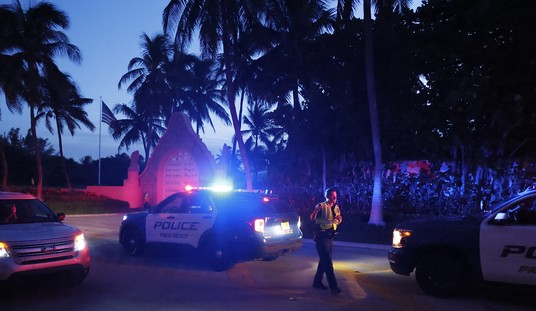The Perfect Rimfire Rifle
Resolved: The Winchester Model 52 is the first premium .22 rifle, the first rimfire rifle “for grown-ups,” and the gold standard by which all other rimfire rifles must be measured. It represents the first of its kind, combining fit, finish, adaptability, and accuracy into a premium package. While not one of the latest hottest Tacticool packages, it remains one of the finest rimfire bolt guns ever made. Now that that’s established, let’s take a closer look at this finest of all rimfire rifles.
The Forerunners
While Winchester produced several slide-action and semi-auto rimfires prior to the introduction of the Model 52, for the purposes of this piece, we’ll just look at (rimfire) bolt guns. Of these, Winchester developed and marketed two.
The first one was a real oddball – a single-shot bolt-action rimfire rifle without a conventional trigger.
Between 1904 and 1923, Winchester produced an oddity called the “Thumb Trigger” rifle. This was a single-shot bolt gun that was fired by depressing a trigger with the firing hand’s thumb; the trigger was part of the sear and extractor at the rear of the bolt. The “Model 99,” as Winchester called the Thumb Trigger rifle, was originally chambered in the .22 Short and .22 Long, with the .22 Extra Long (a sort-of forerunner to the .22 WRF) being added in 1914.
The Thumb Trigger rifle had the advantage of being cheap to manufacture and sell, and sales were not insubstantial, with about 76,000 rifles built and sold during the piece’s nineteen-year run. But the Model 99 was a cheap, insubstantial thing, intended for beginners and casual plinkers.
Overlapping with the Model 99 was a (slightly) more substantial piece, the John Browning-designed Model 1900. This single-shot bolt gun was only a little more complex to manufacture than the Thumb Trigger rifle. While at least having a conventional trigger, the Model 1900 was still a very elementary design. Unlike more modern bolt guns, this piece required manual cocking for each shot by pulling rearward on the exposed firing pin head. The stock was made of the cheapest of woods and lacked even a buttplate, instead having some patterning rolled into the butt of the stock. The Model 1900 proved to be a lasting success for Winchester and lasted longer than the Thumb Trigger rifle; almost a million and a half of the several variants of this rifle were made between 1900 and 1946 when it was quietly dropped. Clearly, there was a market for a budget .22. But for a premium gun?
Up to this point, Winchester seemed to be not taking the rimfire rifle market very seriously. In 1918, Winchester engineer T.C. Johnson decided to change that.
The New Rifle
 If the name T.C. Johnson rings a bell, it’s because we have talked about him in a previous entry as the designer of the famous Model 12 shotgun. Johnson was, as such, one of the few people in history to improve on a John Browning design. He also designed the Model 21 side-by-side and the Model 54 center-fire bolt gun, which was later refined into the famous Model 70. It was from the mind of this engineer that sprang the design of the first premium rimfire rifle.
If the name T.C. Johnson rings a bell, it’s because we have talked about him in a previous entry as the designer of the famous Model 12 shotgun. Johnson was, as such, one of the few people in history to improve on a John Browning design. He also designed the Model 21 side-by-side and the Model 54 center-fire bolt gun, which was later refined into the famous Model 70. It was from the mind of this engineer that sprang the design of the first premium rimfire rifle.
It’s important to remember that in 1918, Winchester was still a lever-gun company. While the 1897 and Model 12 pump guns were selling well, the company’s centerfire rifle sales were dominated by the 1886, 1892, 1894, and 1895 lever guns. Winchester had a few rimfire lever guns; the Model 1873 was offered in .22 caliber, but only a few were made.
But in 1918, the Great War was showing some light at the end of the tunnel, and Winchester was starting to think about the commercial market. In February of that year, T.C. Johnson and another Winchester engineer, Frank Burton, were assigned to work on a new rimfire match rifle. Johnson was well prepared for this, having overseen wartime production of the Pattern 14 and 17 Enfield rifles for the United Kingdom and the United States, respectively.
Originally intended as a match rifle and (hopefully) a military trainer, the new rifle was designed from the ground up for accuracy. Johnson and Burton designed the new rifle on a solid forged tubular receiver and a heavy barrel adapted from the Model 1885 falling-block single-shot.
Johnson and Burton each built their own prototypes of the rimfire bolt gun. Initially, both prototypes were designed as single-shots, but late in 1918, Winchester added the requirement that the new gun should include a 5-round box magazine, so the engineers adapted their designs. In April 1919, the new rifle’s design was complete, and a new prototype of the repeater was sent to be evaluated by Lieutenant Colonel Townsend Whelen, who was then serving in Washington on the U.S. Army General Staff; also in on the evaluation were Major Richard LaGarde, Director of Civilian Marksmanship, and General Fred Phillips of the National Rifle Association. Never had such an august group of reviewers been involved in the evaluation of a rimfire rifle.
All three reviewers were enthusiastic about the new rifle, although all were evasive about the prospects of the Army taking it on as a training rifle. Colonel Whelen recommended that some pre-production samples be sent to the National Matches that August; Winchester rushed six examples to the event, and in the end, five event winners were equipped with what Winchester was calling the “G22R” rifle.
In April of 1920, Winchester began production of the new Model 52 bolt-action rimfire repeater. The production model featured a cylindrical receiver forged from a solid billet of steel, dual rear locking lugs, and a bolt that rode smoothly on polished flats. This was an action engineered to the same exacting standards as a centerfire bolt gun; the only somewhat jarring item was the awkward stock, initially based on the design used on the Lee-Navy rifles, with a steel buttplate and a barrel band.
Several refinements were made over the years:
- In 1930, the original two-stage trigger was replaced with a Frank Burton-designed refinement, an adjustable design with a much shorter pull, yielding significantly faster lock times. These guns were known as the “Speed Lock” rifles.
- In 1935, the Model 52A was introduced, with an improved safety and a slightly modified receiver to accommodate that safety. Also in 1935, a single-shot adapter was introduced for sale.
- In 1937, an improvement on the “Speed Lock” design, replacing the left-mounted bolt-head safety with a sliding plate trigger safety. This design was brought out that year as the Model 52B.
- In 1951, Winchester incorporated some lessons learned from wartime production into the premium rimfire rifle. The Model 52C had a better trigger and an even faster lock time. The 52C is generally regarded by collectors as the best representation of the original design.
- In 1956, the U.S. Olympic team commissioned the building of ten custom Model 52s for the upcoming Melbourne Games. In response, Winchester completely redesigned the rifle as a single-shot, dedicated match rifle, offered commercially in 1961 as the Model 52D.
- Finally, in 1969, the Model 52E added an aluminum bedding block in the stock and a receiver drilled and tapped for scope mounts.
Because of its genesis as a match rifle/military trainer, the Model 52 rifles were never offered with open sights. Iron sights were always receiver-mounted aperture sights and a variety of blade or globe front sights; many rifles bore barrel-mounted blocks for the big Unertl and similar scope designs.
But while the Model 52 was intended as a serious target rifle, there was still a gap in the market for a premium rimfire sporter.
The Sporter
In the early 1930s, John Olin had just taken over as President of the Winchester Repeating Arms company. He had a close friend, an Army officer named Major John W. Hessian, who had a private gunsmith customize his Model 52 rifle as a sporter. The custom gun was mounted in a slim, lightweight sporter stock. When Olin saw the custom rifle, he ordered Winchester engineers to come up with a sporter version of the Model 52 for sale. (If I could have one of these in the late .25 Stevens rimfire, I’d be a happy man indeed.)
The Model 52 Sporter was a study in elegance. It featured a figured walnut sporter stock with a thin, tapered fore-end, a lightweight 24-inch barrel, a round receiver top, and fancy checkering. The sporter also eschewed the big target-style sights for a Lyman aperture year and a blade front.
The result was a beautiful piece. The Sporter was produced from 1934 to 1959, incorporating along the way many of the action design changes described above. Field & Stream magazine described the Model 52 Sporter as one of the “Fifty Best Guns Ever Made.”
Today, Model 52 Sporters command a fancy price in online auctions, but caution! Fakes abound. Many “sporters” are offered but with flat-top receivers, revealing their conversion from the much more common target versions.
Sadly, Winchester discontinued the Sporter in 1959, as rising labor and production costs made this fine, hand-fitted arm too expensive to produce; Winchester had been selling the piece as a fancy loss-leader for several years already, and in the run-up to the disastrous 1964 re-organization, Winchester finally pulled the plug on the Model 52 Sporter.
The Competition
Beginning in the post-Great War era, many American and European manufacturers began producing a bewildering variety of rimfire bolt guns. A substantial book could be written on the rimfire bolt guns of this era, but I’ll name a few significant manufacturers:
Remington produced the 511/512/513 series of rimfire bolt guns. These guns were produced from the late Thirties through the Sixties, with the 513 coming closest to approaching the Model 52 as a premium rifle. Later, Big Green brought out the 580 series, including a new chambering, the 5mm Remington Magnum, a neat little round that was perhaps too far ahead of its time.
Mossberg likewise produced a variety of bolt-action .22s, both box-magazine and tubular-magazine fed. In accordance with Mossberg’s ownership of the “quality on a budget” market, most of these guns were solid, reliable, and accurate, but not especially fancy. The company did produce some fine target rifles nonetheless; the Model 144LSA, for example, is an accurate, fine quality, and affordable piece.
Marlin was later into the game of rimfire bolt guns, as, like Winchester, they were primarily a lever-gun company, but in 1960, they introduced the Model 20, a plain .22LR bolt gun with a box magazine and a plain hardwood stock; a decent enough piece, but it wasn’t blowing up any skirts in the premium gun market, which was not Marlin’s intent in any case.
Many more models were offered, including some fine pieces from such European manufacturers as Mauser, but few of them gained much of a foothold in the American market.
The End
After the 1964 event and another cheapening of the Model 52, Winchester quietly dropped the Model 52 altogether. Some replica pieces were made by Mikoru in Japan and sold under the Winchester and Browning brands, but the originals were done. The Mikoru guns are like the rest of the Japanese-built offerings by Browning: good enough guns, but somehow just not quite the same. Mikoru builds some fine guns – my own Citori, for example – but they are plainly modern, mass-produced guns without the tangible feel of craftsmanship offered by the pre-64 Winchesters.
Today
The Model 52, in introducing the concept of a premium rimfire rifle, was the inspiration (if unwitting) for many fine rifles. The Cooper, Anschutz, and Kimber offerings, among others, have shown that there is a market for such pieces.
But the Winchester 52 was the first premium production rimfire. With this piece, Winchester proved there was a market for a “Cadillac” rimfire rifle for competition as well as for hunters. There have been many since, but the Model 52 was the first, establishing it forever as the Gold Standard for rimfire bolt guns.
Post-script: Readers will note that I strongly favor the original Winchester arms. Any interested in learning more about the original Winchesters (when Winchester was still Winchester) are encouraged to obtain a copy of George Madis’s The Winchester Book. Madis was the Winchester company historian for many years, and there is no better authority for Winchester firearms; I rely on my copy heavily for the information that goes into these articles.














